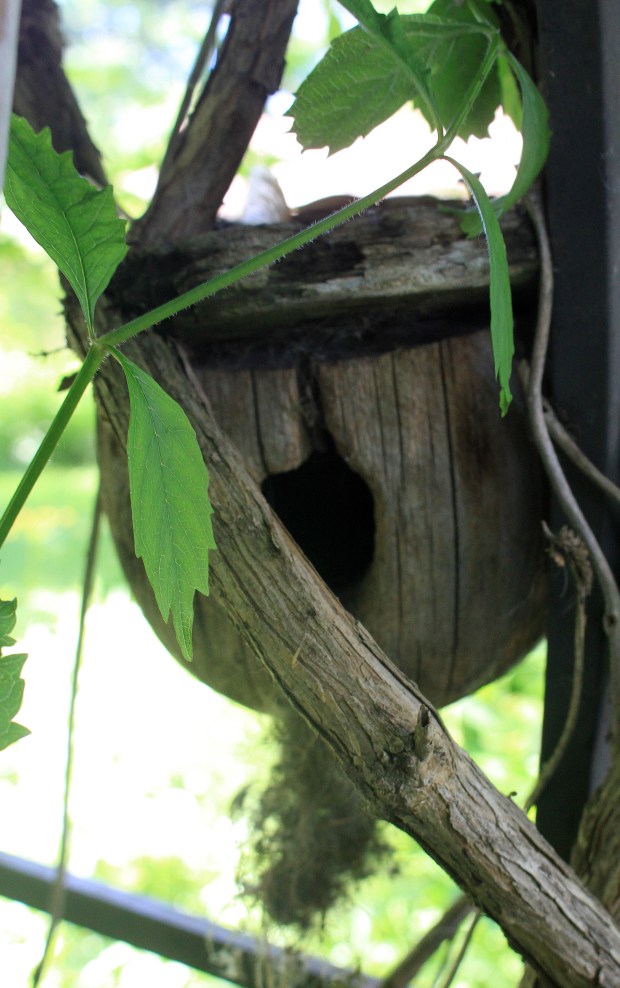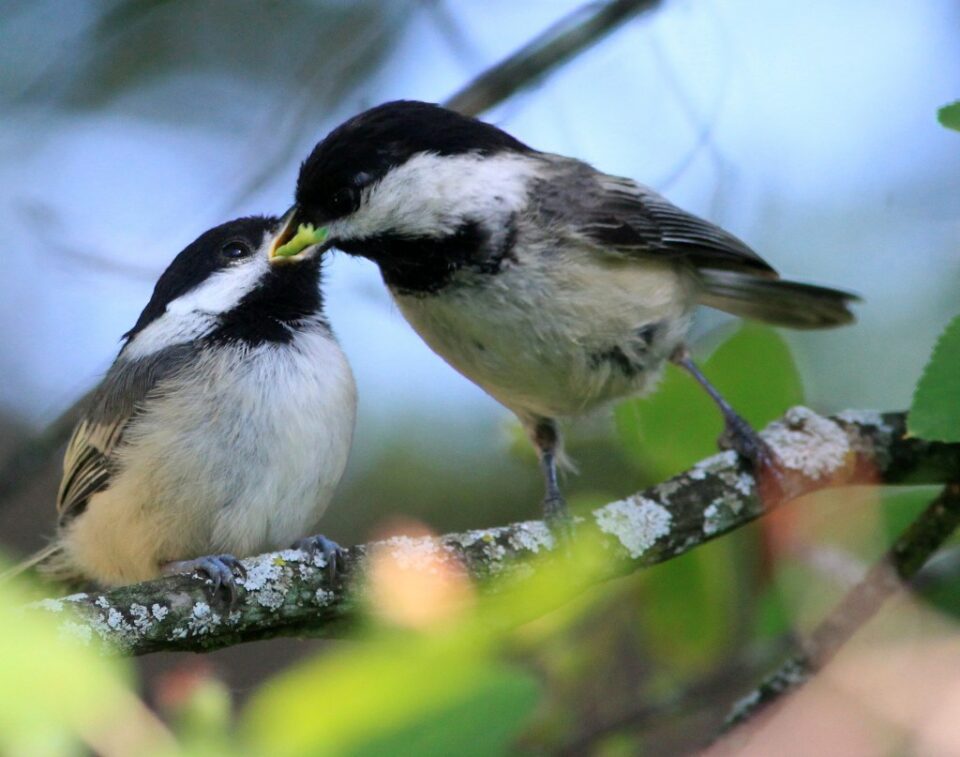[ad_1]
In June, if you’re observant, a window of nature opens for a short time.
By now, common songbirds like chickadees and American robins have finally coaxed their growing young out of their nests and into a wide open space for exploration. You can identify the young and their parents by watching their behavior and noting their plumages.
Young birds look different from their parents in various ways, including seeming to lack a tail since their tail feathers grow in last. They also make begging calls unlike the sounds their parents make, and hop awkwardly on trees learning where to find their own food.

A pair of robins and a pair of chickadees choose our yard to raise their young this season. The robin pair built its stick-mud nest in, of all places, a small evergreen next to our house close to where we enter and leave. We walked as far away as we could when near the nest, and often sat on a hidden bench in the front yard watching and listening to their antics.
Adults give loud scolding calls when another robin moves into their feeding territory. Adults also take turns pulling worms and other morsels from the yard for themselves and later their young.
When we saw a robin with a mouth brimming with caterpillars fly to its nest, we knew the young had hatched. We were careful not to get too close, which might chase the adult away before it had delivered lunch to its offspring.
Meanwhile in the backyard, a pair of chickadees had added moss and other material into an old acorn-shaped nest box, which had a few cracks in it. But the chickadees found it perfect to raise young, and just as with the robin, we watched the adult chickadees from a distance, listening to their “dee-dee-dee” calls telling one another to get back to the nest.
I admit I peered in one day and saw a young chickadee not ready to fledge, with mouth wide open waiting for its parent to feed it. I backed away silently and quickly, knowing that if I got too close to a nest near fledging time, the bird might pop out prematurely.
One day, the chickadee parents were calling and calling and flying back and forth to a tree near the nest. I surmised they were urging their young to enter a large, unknown world from one of cramped darkness. Young birds do seem to have individual personalities as one might leap out into the world upon first insistence from a parent, while another may remain inside, unsure of what to do.
One day, both the robin nest and chickadee nests were empty and we wondered where the young had gone. Had they survived?
At least one chickadee had. Perched in our serviceberry close to another were two chickadees. One was a tad larger and looked a bit unkempt from all of that going in and out of the nest for more than a month. It was dangling a caterpillar in front of its offspring. The clean, brightly plumaged young bird still had its yellow gape, which helps adults see it when in the dark nest. The youngster accepted the slimy green morsel from its parent.
Later we were sitting on a bench quietly beneath our Norway spruces when three newly fledged chickadees began “talking” to one another in a soft, not yet fully developed call pattern. At times, they remained close to one another. At other times, they’d fly away to explore on their own ways to find food in the wild.
Nearby, we heard the unmistakable sound of young robins, recently fledged, but still begging for food from their parents.
It’s easy to tell the young robins because their breasts are spotted, instead of solid red like their parents.
The initial joy in discovering a nesting pair of birds in your yard often wanes as you worry if and when the young will hatch, whether they will get predated and whether the adults will find enough food for them.
Then, when you see the young out and about, the initial joy becomes greater, especially in the 21st century as avian populations decline worldwide.
Sheryl DeVore has worked as a full-time and freelance reporter, editor and photographer for the Chicago Tribune and its subsidiaries. She’s the author of several books on nature and the environment. Send story ideas and thoughts to sheryldevorewriter@gmail.com.
[ad_2]
Sheryl De Vore , 2024-06-18 17:13:54
Source link



